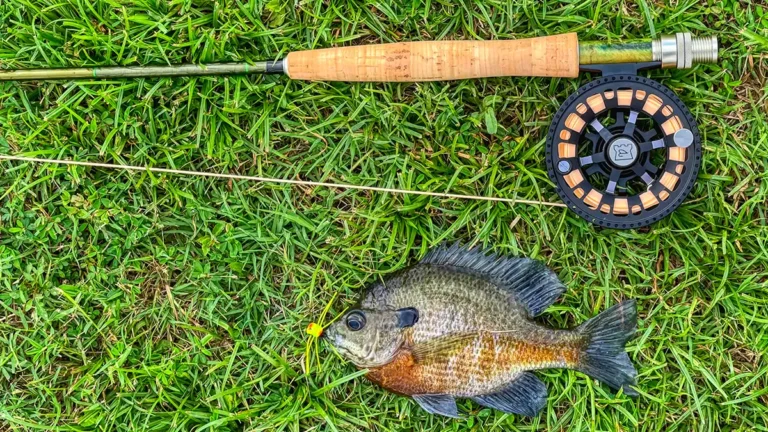Are you eager to dive into the world of fly fishing but not sure where to start? Well, look no further because Jen Ripple has some excellent advice on how to kickstart your fly fishing adventure. And the best part? You can begin with everyone’s favorite feisty fish, bluegills!
Fly fishing is an art that requires practice and patience, and what better way to hone your skills than by taking on these pint-sized powerhouses? Bluegills might not be the largest catch, but they’re an excellent way to master the basics before tackling more challenging waters.
So, leave your waders behind, pack some snacks, and head to your nearest bluegill pond for a day of fishing fun. It’s a fantastic way to enjoy the sport, no matter your skill level.
Choosing the Right Fly for Bluegills
As a newbie to fly fishing, your casting skills may need some work, and your fly might land on the water with all the grace of a boulder. Fear not! Start with a terrestrial pattern fly, mimicking bugs that dwell on dry land – ants, crickets, beetles, or grasshoppers. These flies float on the water’s surface, making them easy for both you and the bluegills to spot.
When the wind inevitably knocks your fly into the water, it’ll mimic a real insect’s frantic movements, attracting those curious bluegills. You’ll create chaos with your fly’s dance, and before you know it, a hungry bluegill will latch onto it.
Stripping Flies for Bluegills
Once your fly has touched down and your line is under control, it’s time to mimic the insect’s movements. Keep your rod tip close to the water’s surface and pull in enough line to eliminate slack. Short, gentle movements – known as “stripping” – will make the fly appear alive.
Setting the Hook with a Fly
When a bluegill strikes, it’ll happen quickly, and you might feel like you’ve lost control of your limbs. But fear not! Your instinct will likely lead you to clamp onto the line, hooking the fish. Simply raise your rod tip straight up (the “trout set”), not too forcefully, and you’re in business.

Fighting Fish on the Fly
Bluegills may be small, but they can put up a good fight. Keep your rod tip high, pull in the line with the hand not holding the rod, and strip it in. As the fish tires, you’ll find it approaching the shore, ready for landing.
Landing the Bluegill
Here’s where your 9-foot rod comes into play. Lift the rod tip behind your ear to bring the fish in close. With a net, you can easily scoop up your catch. Without one, wet your hands, grab the tippet with one hand and the bluegill with the other, taking care to avoid its top fin’s barbs.
In conclusion, fly fishing for bluegills in ponds is an ideal introduction to the sport. It’s an opportunity to practice casting, retrieve techniques, and experience the thrill of the take. Plus, it’s a whole lot of fun. Soon enough, both you and the bluegills will be hooked on this newfound passion.
As a bonus tip, if you’re introducing a child to fishing, starting with bluegills and a terrestrial pattern is a fantastic choice. Ensure the weather is pleasant and stock up on snacks. Bluegills offer quick results with minimal effort, resulting in smiles all around
Images/Source: Wired2Fish





